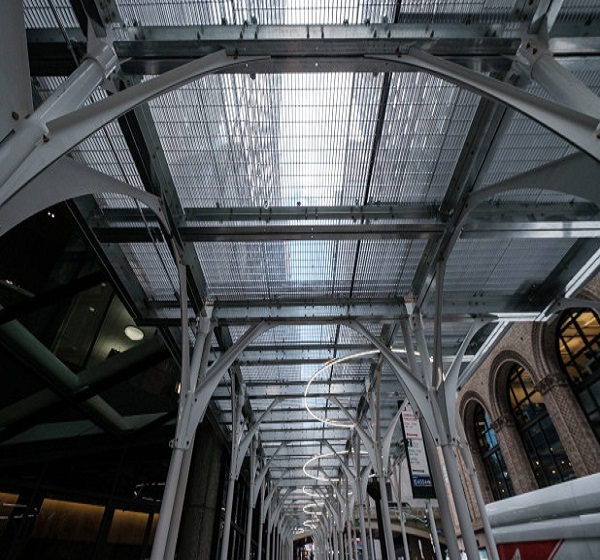No other big city in the world is as blighted by scaffolding as New York. Not Paris nor London, where buildings are older. Not Chicago, which has more inclement weather.
The ugly plywood and pipe structures shrouding buildings all over Manhattan are supposed to be temporary, and yet even the city’s own figures say their average life expectancy is three years, with some surviving more than 20 years.
Even the Department of Buildings, around the corner from City Hall, has been entombed in shabby, smelly scaffolding for a staggering 11 years.
Promises by the city to ease the blight have resulted in an interactive map of “sidewalk sheds” on the department’s Web site, which does precisely nothing to ease the problem.
It just rubs salt in the wound. New Yorkers already know their city has been uglified, and they sense that it’s a scam.
But, like frogs in boiling water, we put up with it, buying the excuse that these structures are necessary for our safety, although they proliferate uniquely in New York, and have safety problems of their own.
Scaffolding has turned the sidewalks outside our homes and businesses into unsightly slums, obliterating natural sunlight and providing an open invitation for homeless encampments.
When it encloses sections of the sidewalk on all sides to form a narrow tunnel through which pedestrians are forced to walk, it also becomes a haven for muggers.
In October, a 57-year-old woman was punched in the face and robbed by four men in one such tunnel outside a construction site on Amsterdam Avenue between 68th and 69th streets, according to the NYPD.
Scaffolding in New York has become a billion-dollar industry and everyone seems content to let it eat our city.
City Councilman Ben Kallos, who represents the Upper East Side, has been trying for three years to fix the problem. But his two proposed bills have been languishing in the Committee on Housing and Buildings since Jan. 24.
He attributes the delay to “overwhelming opposition by the real-estate industry,” including the Real Estate Board of New York, which represents more than 13,000 building owners.
The worst offenders are rental buildings where landlords leave scaffolding in place indefinitely because the $1,200 a month it costs to rent the structure is cheaper than doing a $200,000 repair on the building.
Kallos says he can walk between his home on 92nd Street and Third Avenue and his office at 93rd and Second almost entirely under sidewalk sheds, one of which has been there since before he was elected in 2013.
“As a New Yorker, one of my pet peeves is sidewalk sheds everywhere when I don’t know what just dropped on my head and what they attract, whether people using them as a makeshift shelter or just having negative consequences on our quality of life,” he says.
It is politicians who have created this mess, piling regulation on top of regulation in a knee-jerk response to isolated incidents.
The problem began in 1980, as a well-meaning response to a tragedy on the Upper West Side. Grace Gold, 17, a Barnard College student, was killed by a falling piece of masonry that came loose from a building at Broadway and West 115th Street.
The goal of Local Law 11, enacted the following year, was to prevent another such incident, but as usual, the road to hell is paved with good intentions.
Regulations were tightened under Mayor Rudy Giuliani, and Mayor Mike Bloomberg instituted the uniform green color we have today, as a nod to the permanent nature of the structures.
Mayor Bill de Blasio boasted in 2015 that he had removed more than eight miles of scaffolding from NYCHA buildings. but that was less than 5 percent of the total suffocating the city.
Now, any building higher than six stories has to inspect and repair its facade every five years, rather than a more realistic eight to 10 years.
The short turnaround gives landlords an incentive to keep scaffolding in place, because the biggest cost is the original installation, which runs to a reported $12,500 for a 200-foot-length shed.
If the structure is up for an average of three years, why bother removing it for the next round of inspections?
Source: Nypost










